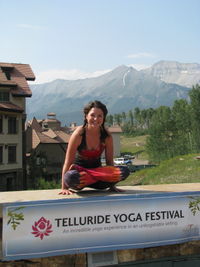Learning and Doing – Sustainability Works
by Kris Holstrom
I’m in the middle of teaching a new class through the University Centers of the San Miguel. The charming director of UCSM approached me awhile back to brainstorm ways to spark student interest in sustainable ways and means. The class burst the seams of its first meeting room with 19 students packed in. ZERI – systems design for sustainability, PERMACULTURE – permanent agriculture (or is it permanent culture?) and RELOCALIZATION efforts are the lenses through which the class examines energy, food, water and waste – among other basic life necessities. This past weekend students chose between pruning and permaculture in McElmo Canyon and visiting the Buckhorn Garden Growing Dome near Colona. Some did both!
 Battle Rock Farm has been producing fruit and food off and on for decades. In the past few years young blood and young fruit trees have taken root. Fresh ideas and enthusiasm are sprouting. It felt far too much like spring Saturday when students converged for a little pruning lesson and a farm tour. In my opinion, far too few folks know how a fruit tree grows or how to tell the difference between pear and peach. Who prefers what kind of “hair cut”. With sharpened pruners and lubricated loppers students translated verbal instructions by Lindsay Yarbrough and me, into action. It’s tough to make those first cuts, but as time passes and decisions made the process becomes a communication dance. “Step back and take a look and listen,” is good advice for pruning. After awhile the cuts are slightly easier to make – they begin to make sense.
Battle Rock Farm has been producing fruit and food off and on for decades. In the past few years young blood and young fruit trees have taken root. Fresh ideas and enthusiasm are sprouting. It felt far too much like spring Saturday when students converged for a little pruning lesson and a farm tour. In my opinion, far too few folks know how a fruit tree grows or how to tell the difference between pear and peach. Who prefers what kind of “hair cut”. With sharpened pruners and lubricated loppers students translated verbal instructions by Lindsay Yarbrough and me, into action. It’s tough to make those first cuts, but as time passes and decisions made the process becomes a communication dance. “Step back and take a look and listen,” is good advice for pruning. After awhile the cuts are slightly easier to make – they begin to make sense.


